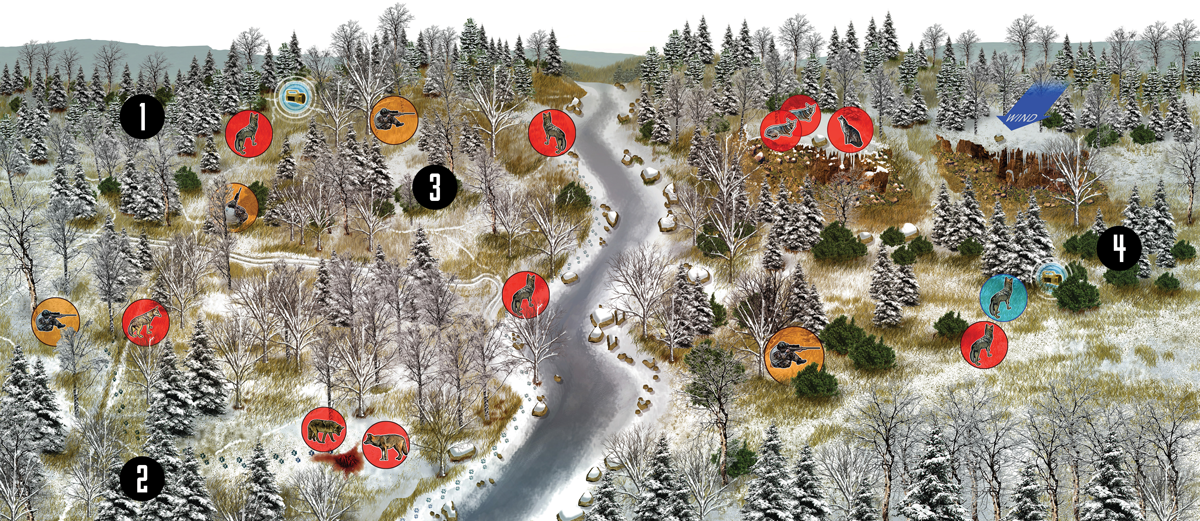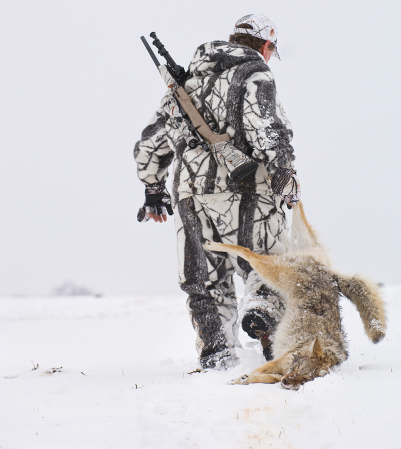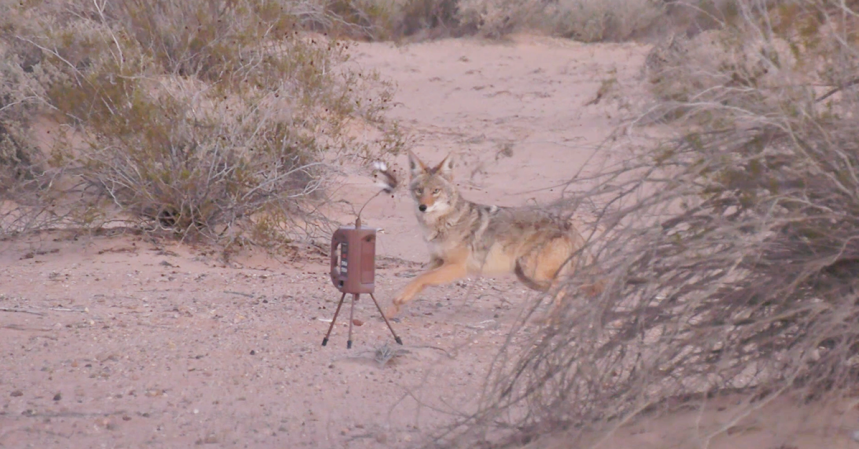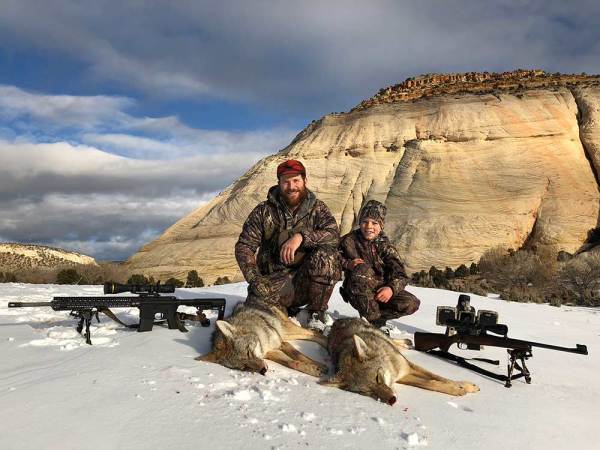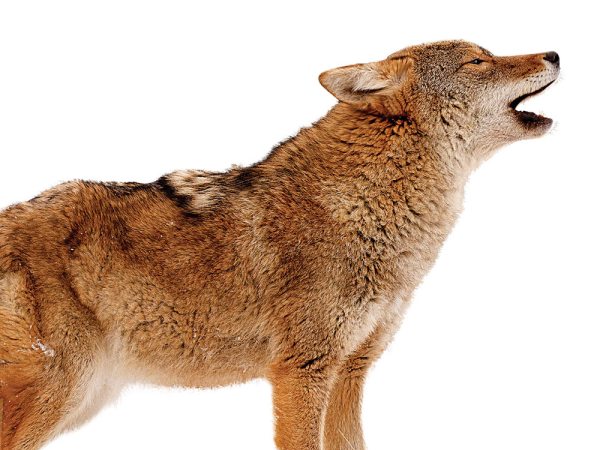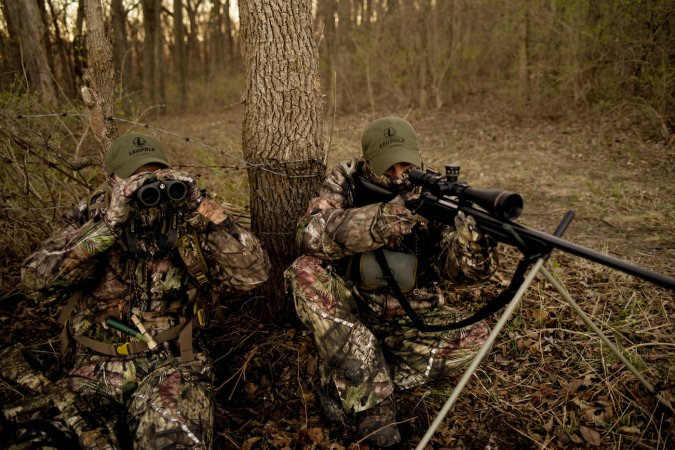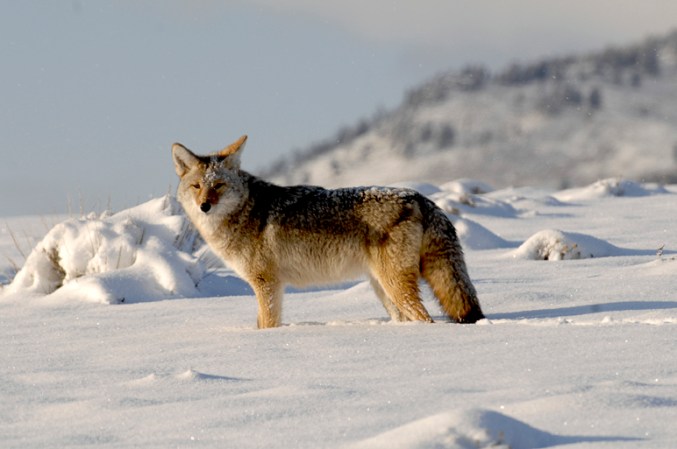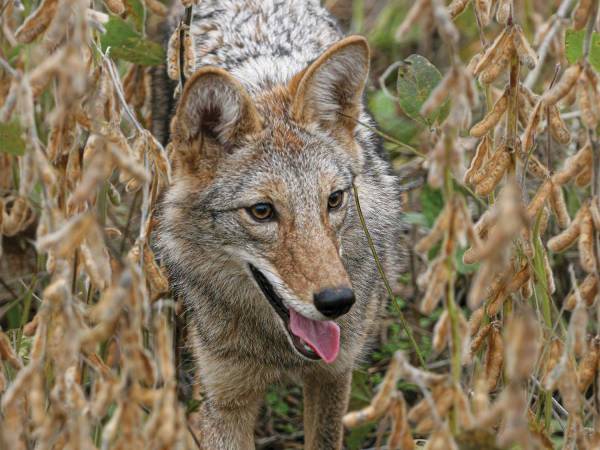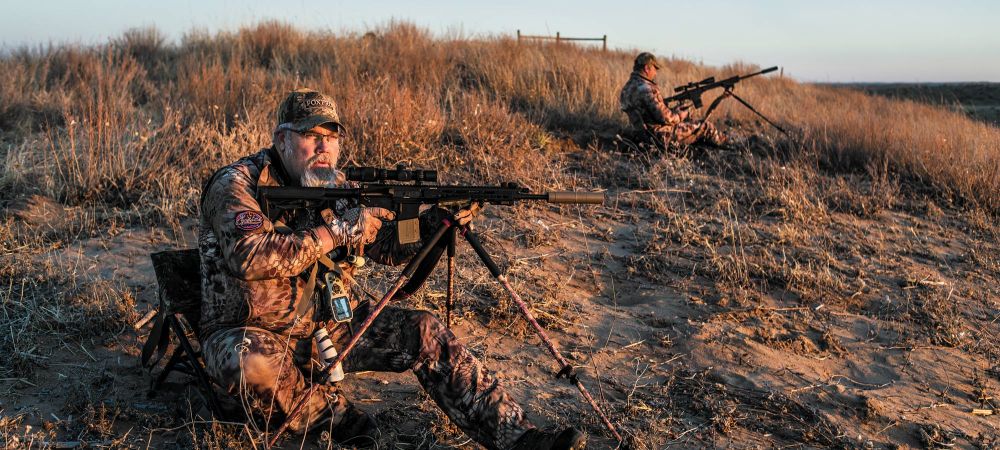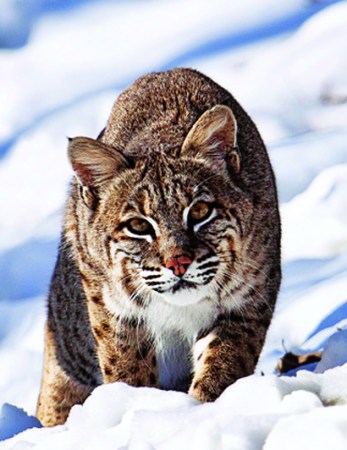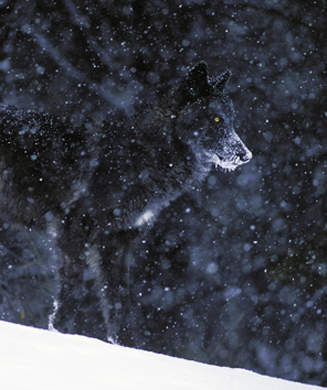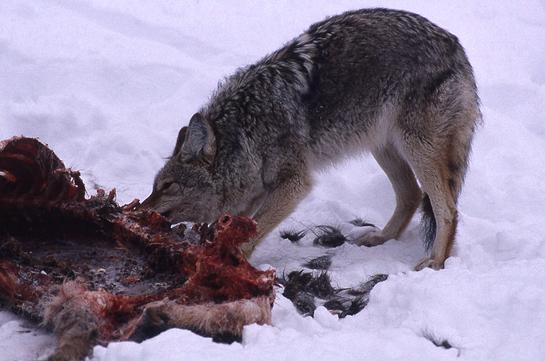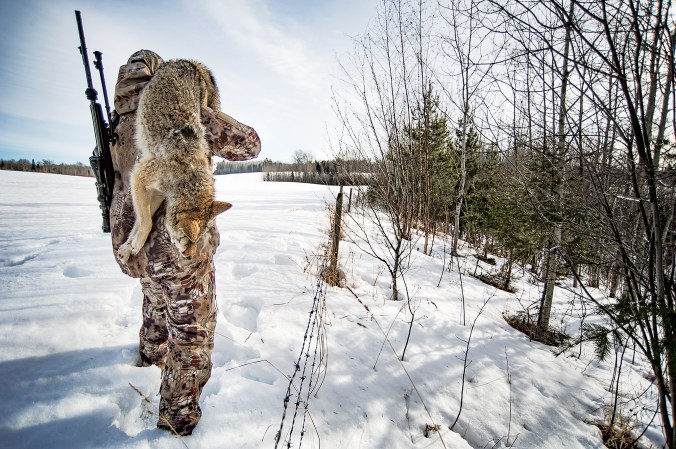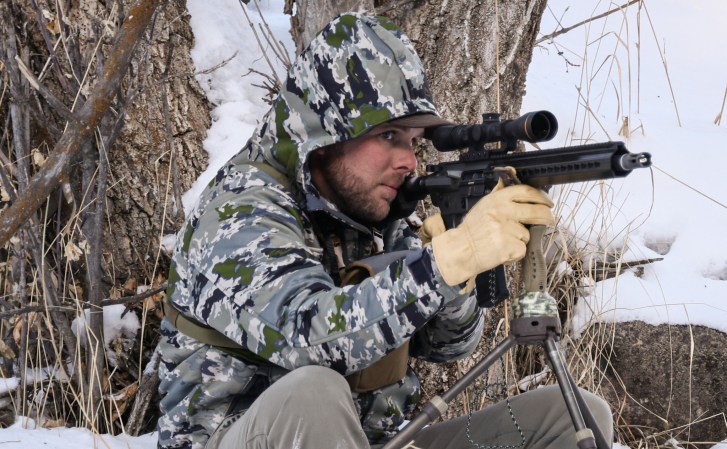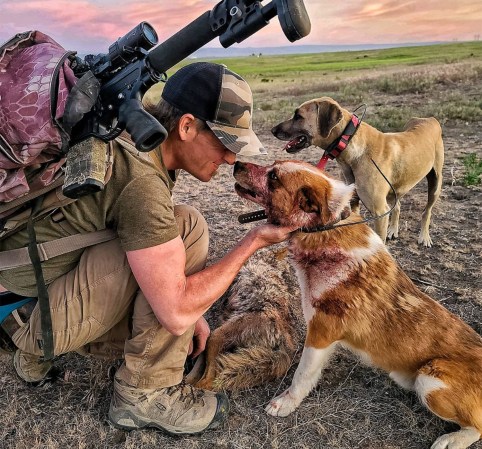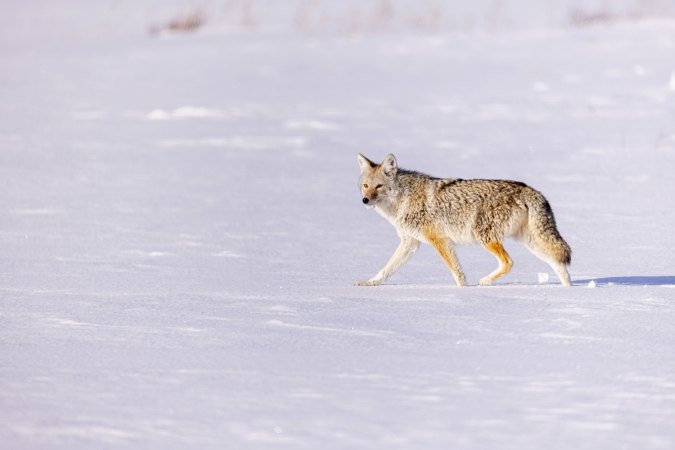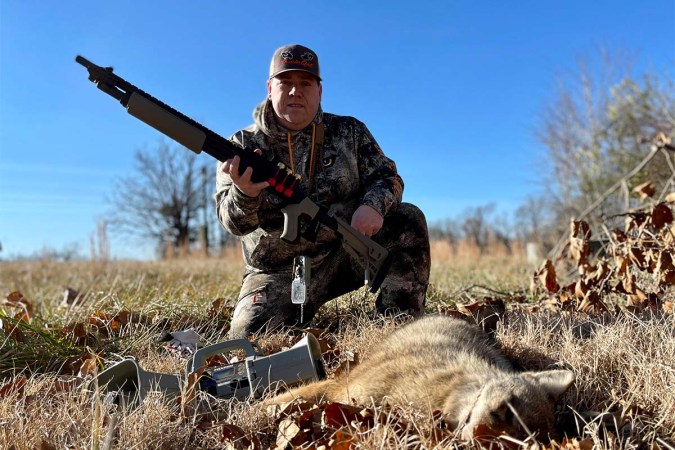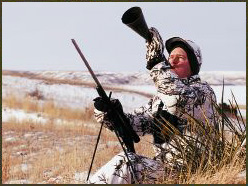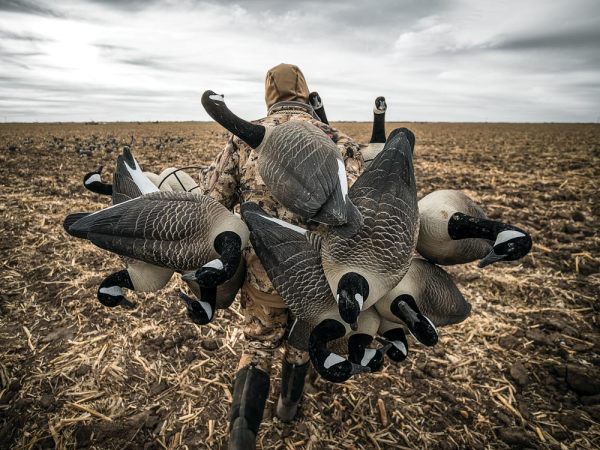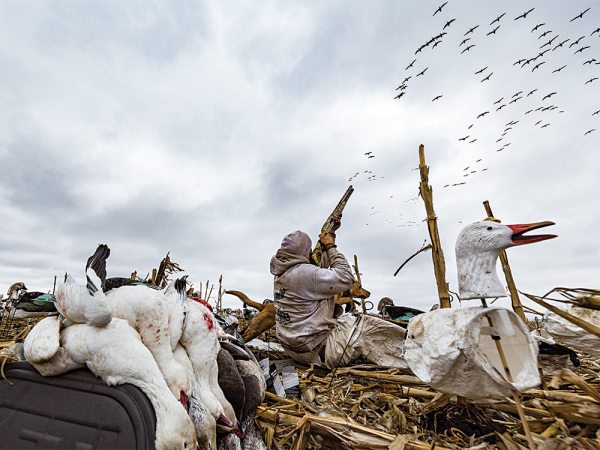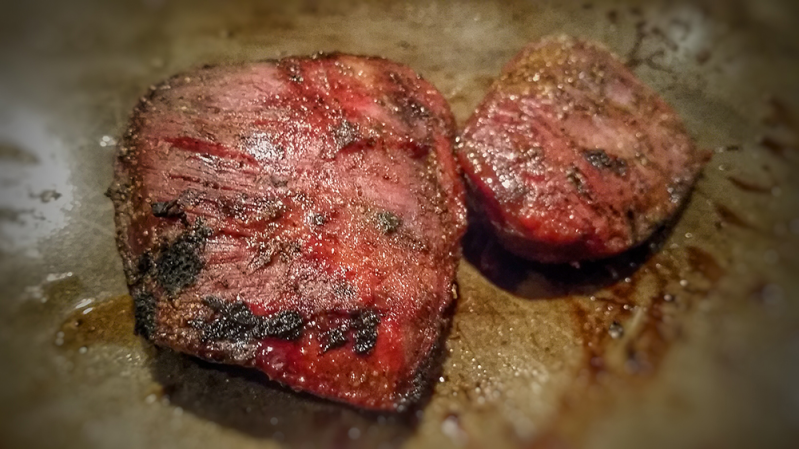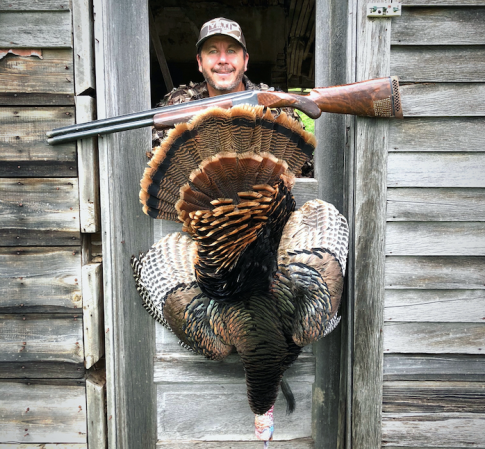Because coyotes are notoriously vigilant, a consistently effective strategy is to pick them off from several hundred yards away. But what’s a hunter to do on tracts of densely wooded public land where open country is in short supply?
“There’s no replacement for scouting,” says retired Maryland state trooper and Pennsylvania-based predator-calling expert Kirk McKendree, who is sponsored by Red Eyes Ops, Coyote Light, and ICOtec. Your best bet is to use your ears. If you regularly hear howling at night, that area is a good place to start.
Les Johnson of Les Johnson’s Predator Quest says the same thing. The Nebraska native is a champion caller with an animal science degree, and he often drives county roads to look for scat and tracks.
Once you find an area that is holding coyotes, the trick is to home in on them undetected. It’s challenging, and requires the right combination of terrain and wind, but it can be done. Here’s how.
1. Game Trail Ambush
Find a deer path running through the woods and you’re in business, says McKendree. Bring your shotgun and set up about 10 yards off the trail and downwind of your electronic caller. Try calling softly at first, alternating with a hand call if you prefer. Expect a coyote to circle downwind of the distress cries, so take your shot when he crosses the path. You should also be prepared for a coyote to trot in along the trail, says Johnson, so the thicker the cover you select, the better. Be ready for a snap shot if the coyote abandons a cautious approach and moves in fast.
2. Gut Buster
It can be challenging to coax in coyotes at the end of deer season, when the predators are busy finishing off crippled deer. So keep an eye out for other hunters and the discarded gut piles from their kills. Back off once you’ve located one, says Johnson. “I don’t want to alert coyotes right at a gut pile. I see which direction they’re traveling in, and then I try to go 1 to 3 miles away and pick them off there.” If you choose to hunt over offal or a winter-kill carcass, you’ll likely see the coyotes only at night, and you’ll wear out the setup much faster.
3. Frozen Footrace
Rivers and streams transform into reliable travel corridors once the temperatures drop. Coyotes will be using these highways, and you should too, says Johnson. Once the water freezes solid, walk out onto the ice, turn into the wind, and keep pushing until you cut fresh tracks. As soon as the prints veer back onto solid ground, get off the ice and find a high bank in thick cover. “Call into the woods with a hand call—two series, then one series—and they should come ripping across the ice or snaking through the timber.”
4. Outside the Box
Public-land coyotes will likely be conditioned to human callers. If you’re struggling to get one to commit, add a decoy. McKendree prefers non-target animals, but he experiments with coyote decoys once breeding season kicks in. “It can spook them, but sometimes a decoy might be all it takes,” McKendree says, especially if other hunters haven’t tried them.
The same principle applies to calling. “A lot of people are afraid to use new sounds,” says McKendree, who might use a jackrabbit or prairie dog cry while hunting in Pennsylvania. “But that non-native sound might be the key.”
Illustration by Kevin Hand

